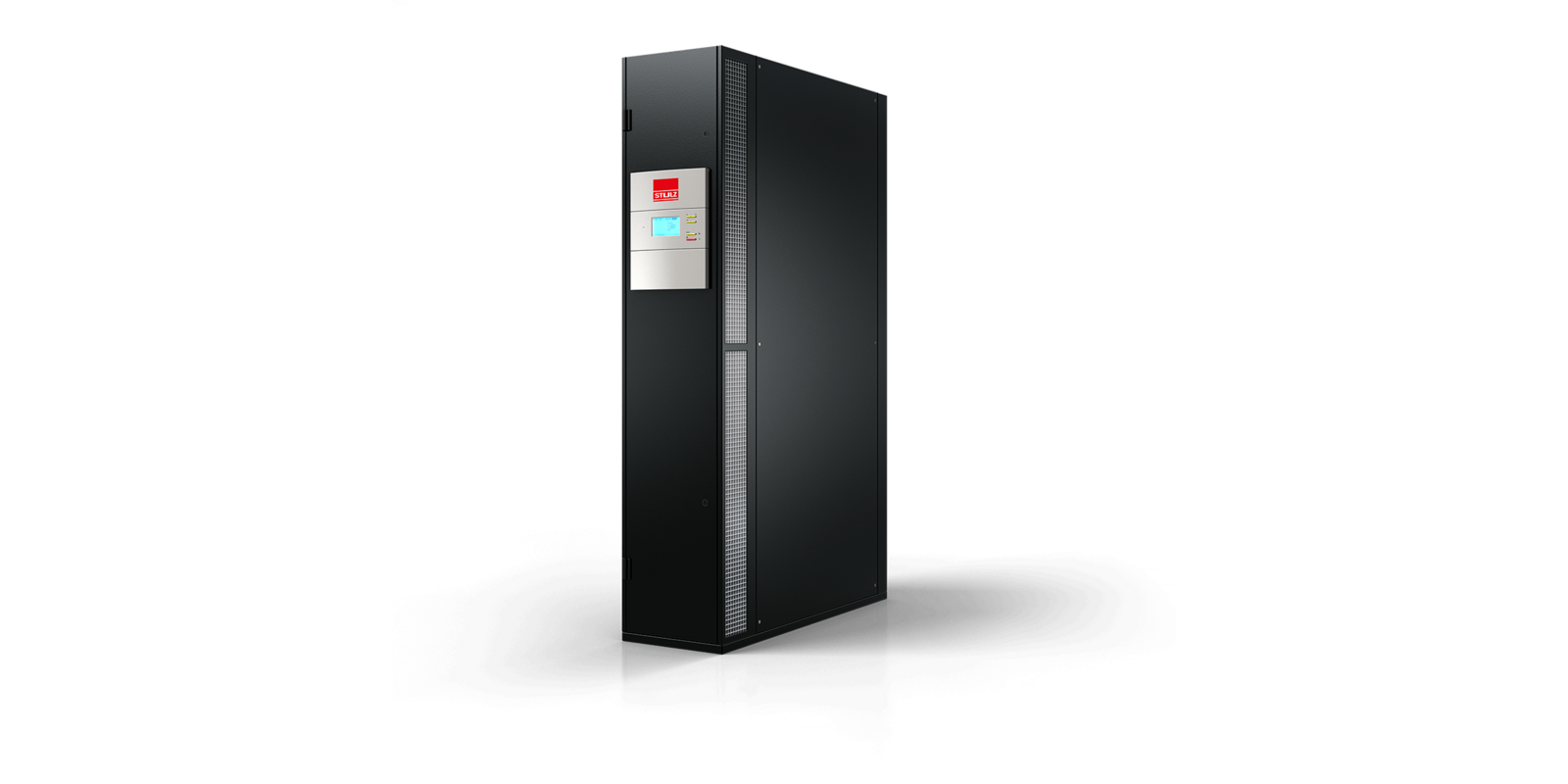Africa is the world's second-largest continent and also comes second in terms of population. It comes as no surprise, then, that the local Data Center market has developed strongly over recent years.
Data Center climate control in West, Central, and East Africa

This has a number of reasons. Where IT is concerned, the countries have some catching up to do-but the continent's decision-makers have recognized this and embrace new technologies with a remarkable enthusiasm. Mobile communications coverage is good or even very good, which opens up a multitude of options for using the Internet. Examples include pilot projects for using smartphones to perform medical diagnoses or to provide access to university courses in rural areas. Just as in our regions, the desire for consumer goods is a major factor driving innovation. And the course is set-after all, who needs local bank branches when you can pay for anything by cellphone?
In this respect, the African population is showing us what payment will look like in future: cashless, with a simple text-message handshake and without ATMs and the like. A further key factor is that establishment of sophisticated infrastructure is progressing ever more rapidly in many regions and that electricity supply is improving more and more. This in turn is of interest to investors who want to produce goods. Because of the continent's vastness and the connection to seaports, Africa's boom begins at its coasts and edges continuously inwards. Though this will take its time, progress in the field of IT is irreversible.
With close to thirty expertly trained partners and our own branch in South Africa, we are perfectly prepared for the African market. This makes us the ideal partner for national and international businesses and telecommunications providers active on the continent who require climate control systems for IT and Data Centers.
So, what solutions are required?
Michael Jux is our man in Africa and he’s always bringing back news of interesting projects from his business trips. This is proof positive that there’s demand for Data Center climate control and IT room air conditioning. But to compete, you need to be fit. Which suits Michael just fine, since he’s an Ironman contender. Of course, his many years of experience as a STULZ expert actually come in even handier.
The local climate conditions pose quite a challenge. Also, there are often structural restrictions related to the architecture that preclude certain systems right away. One thing’s absolutely sure:
Consultation for projects in Africa requires sound preparation. How do I choose the right system, how do I plan for redundant design, what alarm and monitoring concepts do I need to put in place, what are the thermal loads, how can I save energy? These are the issues that continue to crop up in discussions—which also shows that the people responsible are becoming more and more sensitive to the topic and that reliable operation of an IT system can only be realized in conjunction with a professionally planned climate concept.

The Data Center market on the continent is characterized by small to medium-sized centers that support a variety of IT services. The majority of these Data Centers are still cooled using comfort air-conditioning units that are not designed for such use and possess poor energy ratings. In terms of regulating the climate for critical systems such as Data Centers, comfort air-conditioning units are the worst-possible choice. They even entail a safety risk as they are not designed for Data Centers and have problems with the required continuous operation.
Another major drawback of comfort air conditioning units is the lack of their components’ proportionality. The air-conditioners cannot be demand-controlled in accordance with the Data Center’s requirements and sometimes produce too much cooling, which in turn wastes energy. One might think that climate systems in Africa need to run at full load all the time due to the constantly high temperatures—this is not the case. As any Data Center has times with high and times with low load, precision air-conditioning systems are the right solution.
STULZ climate systems are available with speed-controlled EC fans and EC compressors. They allow adjusting the components mentioned perfectly to the respectively required output and the cooling performance can always be set in proportion to the Data Center’s load. With dropping load, the climate system’s power consumption is reduced thanks to the EC motors’ and EC compressors’ infinitely variable adjustment to the demand. In addition, STULZ solutions are modular in design and can thus be added exactly as required for a Data Center’s every development stage.
CyberRow—A Full Success
In African Data Centers in particular, the classic closed circuit air conditioning with raised floor can be implemented only in new Data Centers. Where the building imposes restrictions, CyberRow is the perfect solution. The units are classic side coolers with highend details that ensure economic operation.
They are set up as stand-alone solutions between the server racks. The server racks’ make is irrelevant. The rack merely needs to feature a perforated front and rear door so that the cool air can be aspirated by the servers. In terms of cooling capacity, CyberRow systems match traditional closed-circuit air-conditioning systems. Their greatest asset is their scalability: The air-conditioning can easily grow alongside the number of installed servers. And the cooling performance can be flexibly adapted to the respective racks’ output range.

Furthermore, side coolers offer impressive energy efficiency: As the cold air reaches the rack via the shortest distance, virtually no cooling power is lost. Cooling performance losses can be reduced further by means of cold aisle/warm aisle configurations. And last but not least, side cooler systems also significantly reduce the required humidity control measures thanks to the units’ high refrigerant vaporization temperatures, which mean that only a minimum of humidity is drawn from the air. The manifold benefits in terms of efficiency go so far that side cooler systems can be operated as economically as closed-circuit air conditioning at least for small and medium-sized Data Centers.
Does Free Cooling make sense for Western, Central, and Eastern Africa?
There are generally two types of Free Cooling, Direct and Indirect Free Cooling. With Direct Free Cooling, filtered outside air enters the data center and integrated compressors provide back-up for the times at which Direct Free Cooling is not possible due to the high temperatures. Indirect Free Cooling is a closed system that never allows outside air to enter the data center.
The STULZ system with Indirect Free Cooling and dynamic control (DFC) features two cooling circuits: One direct evaporator circuit with internal brazed plate condenser and a free-cooling system. Both jointly utilize an external recooling heat exchanger while each circuit has its own heat exchanger. Data center climate systems have a service life of around 10 to 15 years and whether or not one of the above Free Cooling methods can be used should always be checked. We can use precise weather profiles, which are available for almost any country in the world, to accurately compare the economy of different systems.
Free Cooling makes sense particularly for regions that are high above sea level, during the night, and in winter. In Addis Ababa/Ethiopia (2,400 m above sea level), we realized a few major projects for a customer that use STULZ EcoCool or DFC² (Direct Free Cooling) air-conditioners for climate control. We used a precise CapEx/OpEx calculation for a pure compressor system and a system with Direct Free Cooling and compressors as back-up to show in detail that the added expense of the free-cooling under two years. At local electricity rates of 0.120 Euros per kWh and a runtime of ten years, our customer in Ethiopia saves more than 500,000 Euros in energy costs.
The project comprises eight main data centers and additional smaller IT rooms spread throughout the country. This makes it the perfect reference for large and for small data centers. Despite the improved electricity grids in Africa, there are still longer blackouts during which the air conditioning systems shut down. To provide back-up in such cases, we equip our DFC systems with intelligent features capable of establishing redundancy during power failures. Our power supply management closely monitors the power supply. In the event of a blackout, a back-up free-cooling system comes online, which is powered by a UPS. This freecooling system thus ensures continued operation during blackouts. In addition, the units feature rapid and reliable restart which ensures that the system comes back online directly. This means blackouts can be handled and expensive generators for ensuring compressor cooling are mostly no longer required.
